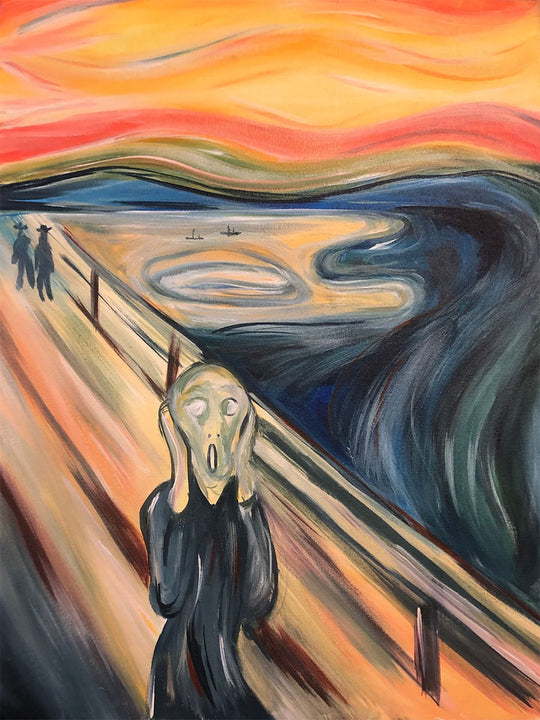
Few paintings are as instantly recognizable as Norwegian artist Edvard Munch’s The Scream. That twisted figure, mouth agape in silent terror, has become a symbol of existential dread. But what drove Munch to paint such a raw and unnerving image? The story behind The Scream is just as gripping as the painting itself.
In 1892, Munch was taking a walk along a fjord at sunset when he felt an overwhelming wave of anxiety and despair wash over him. He described the moment in his diary, in an entry titled Nice 22 January 1892:
"One evening I was walking along a path, the city was on one side and the fjord below. I felt tired and ill. I stopped and looked out over the fjord—the sun was setting, and the clouds turning blood red. I sensed a scream passing through nature; it seemed to me that I heard the scream. I painted this picture, painted the clouds as actual blood. The color shrieked. This became The Scream."
That moment of intense anxiety, that we now recognise as being a panic attack, became the basis for The Scream, with its swirling, almost suffocating sky and the distorted figure that seems to dissolve into its surroundings. Munch once said, "My art is rooted in a single reflection: why am I not as others are?.. my art gives meaning to my life." - a quote that sheds light on his deeply introspective nature and constant exploration of the darker sides of the human experience.
Munch created several versions of The Scream - two paintings, two pastels, and in 1985 he created a lithograph stone version, which he used to make approximately 48 prints.
It’s no surprise that the wildly popular painting has been at the center of several thefts. In 1994, it was stolen from Norway’s National Gallery on the opening day of the Winter Olympics, with the thieves leaving a note saying "Thanks for the poor security". In 2004, another version was taken from the Munch Museum in Oslo. Both were eventually recovered, but the notoriety of the thefts only added to the painting’s legend.
The legacy of The Scream also found its way into pop culture. The famous Ghostface mask from the Scream horror movie franchise is directly inspired by the anguished figure from Munch’s painting. The mask was originally created by Brigitte Sleiertin for the Fun World costume company, intended as a spooky Halloween mask. But when Scream producer Marianne Maddalena and director Wes Craven discovered it, they immediately recognized its chilling resemblance to The Scream and knew it was perfect for their film.
The Scream continues to captivate audiences with its raw depiction of human emotion, capturing the universal experience of anxiety. Munch’s masterpiece speaks to the power of art to convey complex feelings in a way that words cannot. Its enduring impact reminds us of the deep connection between creativity and the human condition - an expression of the emotions that shape our inner world.

